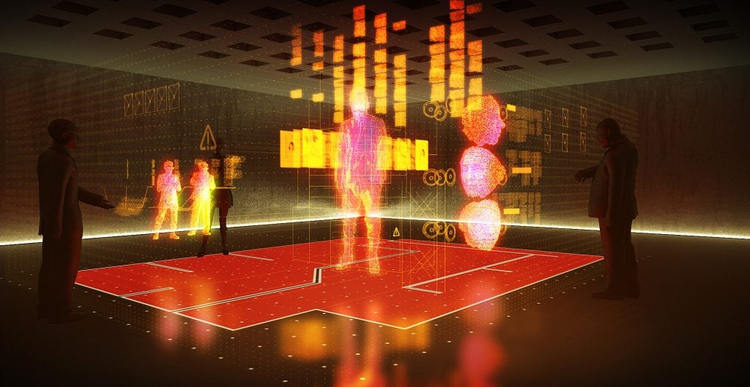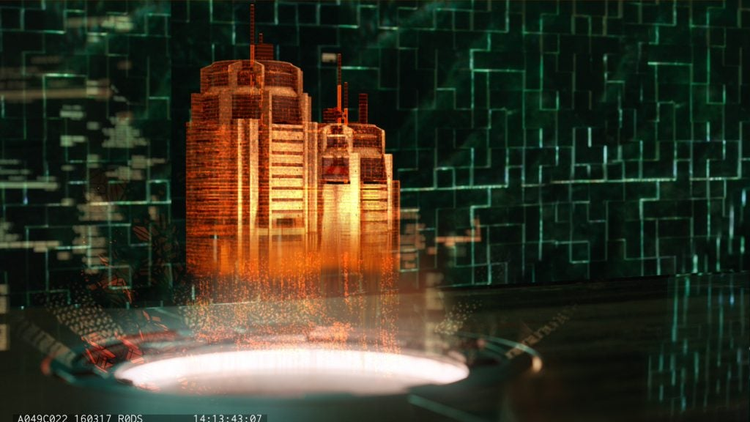Behind the Scenes of Ghost in the Shell

Released in the United States in March 2017, Ghost in the Shell is a visually-stunning action film featuring a cyber-enhanced character who fights dangerous criminals while searching for her true identity. When the film’s visual effects team needed support with futuristic technology concepts and visual effects, they contacted Territory Studio, a motion-graphics and visual effects studio known for delivering high-end creative for film. Just a couple of weeks after starting initial conversations, the Territory Studio team jumped in.
Territory Studio has produced screen graphics, titles, visual effects, and original content for many Hollywood films, including The Martian, Guardians of the Galaxy, Mission Impossible 5, Zero Dark Thirty, and Prometheus. The team started working on concepts for Ghost in the Shell when the film was in the last stages of principle photography and the editorial process was just beginning. A few months later they transitioned to the second phase of the work, which involved creating close to 200 assets for the film. MPC in Montreal was responsible for visual effects direction for the film.

“The concept work that we did informed the VFX output with regard to the assets and holographic elements in the film,” says Peter Eszenyi, Creative Lead at Territory Studio. “We also created 3D assets that were delivered to main VFX team at MPC to include in shots. Ghost in the Shell was one of my favorite films to work on because so many people contributed.”
Initial concepts inform direction
The “world building” part of the project involved concepting various holographic technologies and environments where the characters would interact. For example, the conference room in the film was an important part of the original Japanese anime film, so the team worked with VFX Supervisor Guaiilaume Rocheron to design the room so it achieved just the right look. They also worked on various holographic technologies, including the hologlobes, which established context for several of the action scenes.

“One of the interesting things about the _Ghost in the Shell _brief is that there are no screens in the film,” says Eszenyi. “Instead of creating elements that appeared on flat screens in the background of a scene, we created ‘hologlobes’, essentially personal holographic computers that became part of the environment, which was a fun challenge.”
The initial concept phase, which began in July and ended in late August of 2016, involved four team members. When they transitioned into the asset phase, they ramped up to approximately 15 people. As with other projects, Territory Studio added freelancers to the core team to help with the production of all of the assets. Using Creative Cloud for teams, Territory Studio easily assigned licenses to the freelancers working on site in the studio for the duration of the project.

Core apps for visual effects production
The team worked with Adobe Photoshop CC to create concepts and sketch ideas and Adobe Illustrator to design elements that needed a more pixel-perfect look. To quickly put these concepts into something that resembles the final shot or idea of the final shot, artists relied on Adobe After Effects CC. The team also rendered a lot of passes in Cinema 4D, including various shaders, textures, and particles driven by different forces. They then brought them into After Effects and started to shuffle them around.

“After Effects became a creative tool, we were not limited by the original idea behind the rendered pass,” says Eszenyi. “For example, a refractive render became a mask, or a Fresnel shaded element suddenly was used as a luma matte. We layered these in a very freestyle fashion and were looking for the happy accidents resulting from these experiments. The way After Effects works is really suited to these exploratory ventures and gave us great results.”
Watch Peter Eszenyi’s IBC 2017 presentation.
Learn more about Adobe Creative Cloud pro video tools